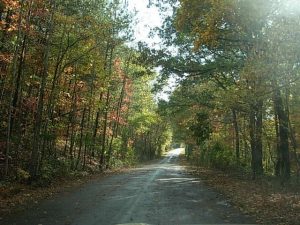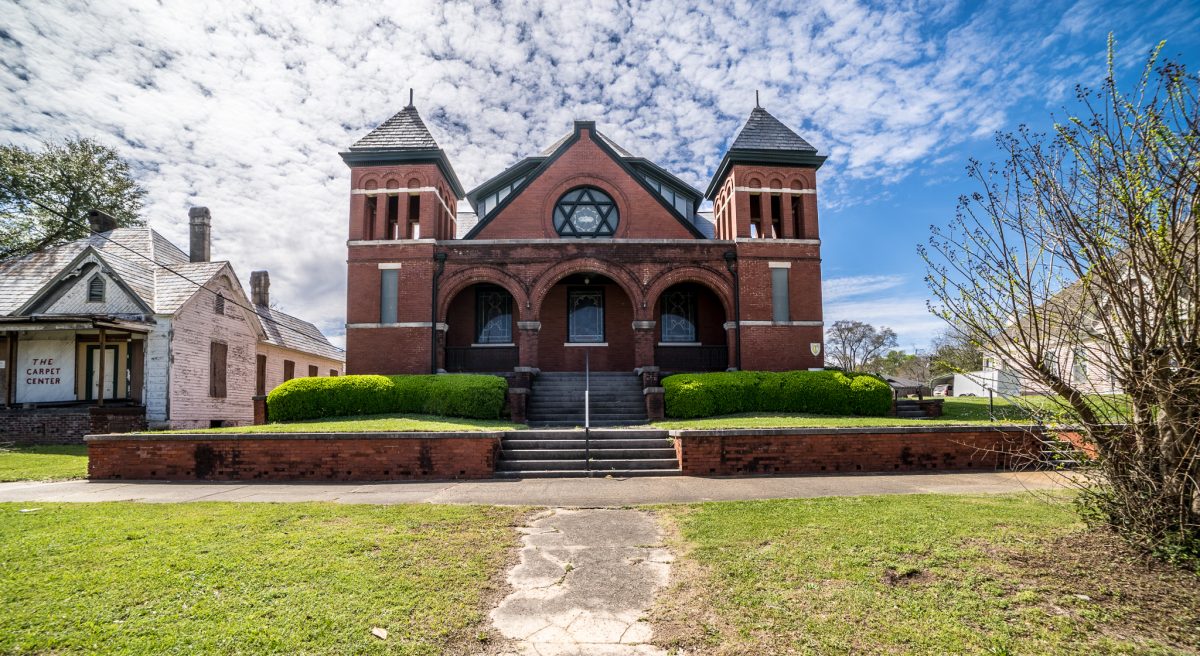We arrived in Montgomery from New Orleans after a long but easy drive – other than a brief detainment by Border Patrol – not knowing what to expect of either place, but seeking to experience some of the history of the African American Civil Rights movement, perhaps to purge the memories of our awful experience near New Orleans. We gave ourselves three nights, which meant one day to see each town.
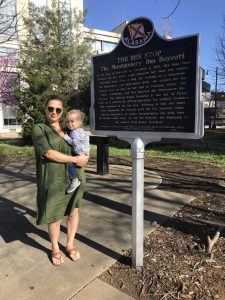 Our campground – no, “resort” – was more a gravel parking lot behind an Arby’s on a major highway, but not actually the worst place we’d parked our home, so we deferred judgement and decided to explore the area the next day. We got up and drove into downtown Montgomery for breakfast, parking the truck at exactly the spot where Rosa Parks had boarded that famous bus ride.
Our campground – no, “resort” – was more a gravel parking lot behind an Arby’s on a major highway, but not actually the worst place we’d parked our home, so we deferred judgement and decided to explore the area the next day. We got up and drove into downtown Montgomery for breakfast, parking the truck at exactly the spot where Rosa Parks had boarded that famous bus ride.
An amazing breakfast of biscuits and whatnot fueled us up for our day in Montgomery, but as we looked around we realized we really didn’t have much we wanted to see in Montgomery. When those heroes of 1965 marched, they gathered, and prayed, were beaten and murdered, and then found their voices in Selma; they only came to Montgomery to make their demands in the capitol. Our hearts heard Selma beckoning.
We made the reverse trek down to Selma. With the Neville Brother’s Yellow Moon softly playing as soundtrack, the drive was silent and punctuated by lots of tears of contemplation.
Our first stop was at the Selma Interpretive Center and its staff of three incredible young women warmly welcomed us to the quiet museum focused on putting the events of 1965, and its aftermath, into context. It was powerful and honest, as later was the walk across the bridge to the Voting Rights Museum.
At the center we discovered to our good fortune that the weekend would bring Selma’s annual jubilee, commemorating the march through public celebrations, fundraisers, speeches and sermons, and culminating in a march across the bridge. We decided to come back the next day, and the next, and join the people of Selma, along with John Lewis, Rev. Jesse Jackson, Dr. Cornell West, Maxine Waters and so many others. Everything and everyone we wanted to see was in Selma.
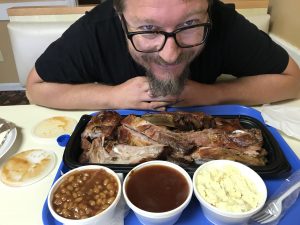 Everytime we turned around in Selma, we were greeted warmly by people inquiring to know where we came from, where we were going, to tell us where to eat, where to stay, and what we should see. After describing our accommodations in the capitol to a sympathetic local newspaperman he recommended we check out a campground nearer to Selma, on federal land, which we had skipped as we heard it might be closed for the season. We stopped for an unreasonably tasty and cheap BBQ dinner at Lannie’s, then headed back to out to the highway.
Everytime we turned around in Selma, we were greeted warmly by people inquiring to know where we came from, where we were going, to tell us where to eat, where to stay, and what we should see. After describing our accommodations in the capitol to a sympathetic local newspaperman he recommended we check out a campground nearer to Selma, on federal land, which we had skipped as we heard it might be closed for the season. We stopped for an unreasonably tasty and cheap BBQ dinner at Lannie’s, then headed back to out to the highway.
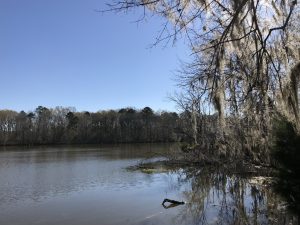 No sooner had we left Selma than we saw an office for the Army Corps of Engineers which operated the presumably closed campground at Prairie Creek, so Stephanie hopped out of the car to inquire and found that it was, indeed, open to guests and only a few miles away. A few moments later we were in a stunning forrest, surrounded by creeks and rivers, making reservations to stay three nights there, starting the next morning.
No sooner had we left Selma than we saw an office for the Army Corps of Engineers which operated the presumably closed campground at Prairie Creek, so Stephanie hopped out of the car to inquire and found that it was, indeed, open to guests and only a few miles away. A few moments later we were in a stunning forrest, surrounded by creeks and rivers, making reservations to stay three nights there, starting the next morning.
We raced back to Montgomery and got packed up and ready to scramble back down to Selma first thing in the morning for the jubilee and the most beautiful campground we’d stayed in yet. Our weekend in Selma was powerful, cathartic, and far too eventful to cover in this post, so it’ll have to be continued in another installment.
